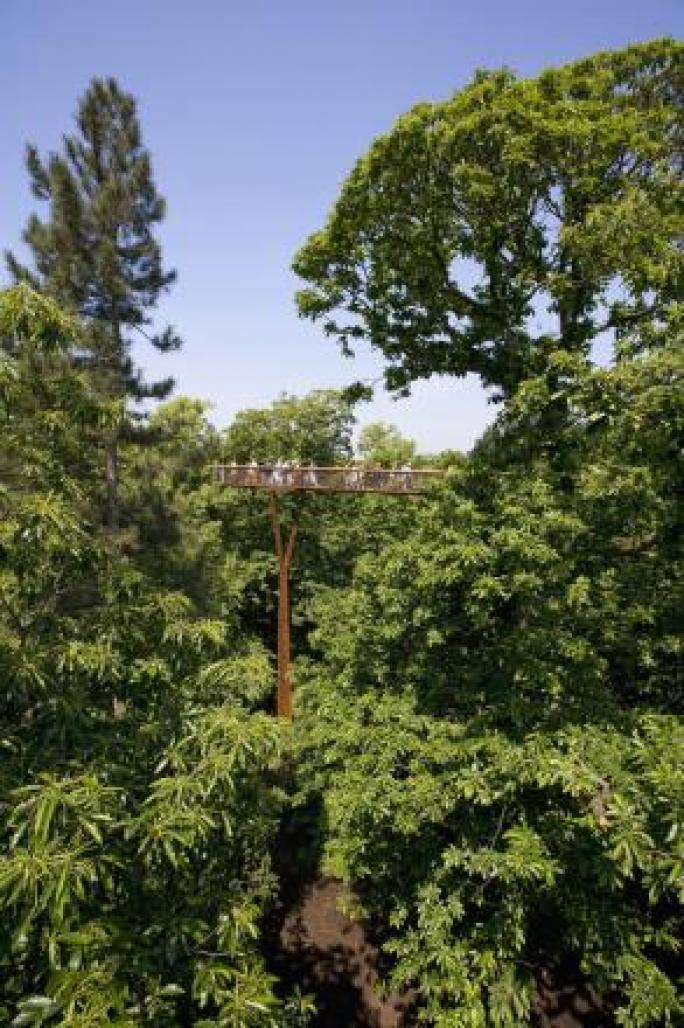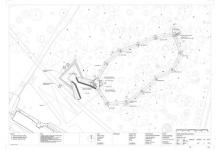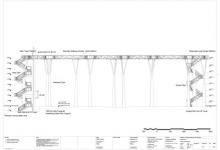The tree top walkway at Kew Gardens is designed to take visitors 18m high into the tree canopy for a birds’ eye view of Kew, the opportunity to discover the rich biodiversity of the forest canopy and learn about the importance trees play in the environment. The ‘Rhizotron’, entered through an apparent crack in the ground, is a walk-in viewing area illustrating the world of tree root biology.
Our aim was to design the walkway to be a visually light, discreet presence, at ease in its natural surroundings; while at the same time being unashamedly man-made. We decided to integrate the structure with the handrail support and drew on the Fibonacci sequence, which underlies many growth patterns in nature. By using the progressive series of numbers associated with the sequence {1,1,2,3,5,8,13,21,34, etc}, we were able to work to create a ‘Fibonacci grid’ along a typical walkway truss, resulting in a higher density of elements near the trussends where the vertical loads are highest.
Weathering Steel was chosen for the structure: this high-strength, low-alloy steel rusts over time, forming a protective barrier against oxygen, moisture and contaminants. Its longevity and low maintenance requirements make it ideal and its gritty, robust, beautiful appearance complements its natural surrounding.
One of the major challenges was to strike a balance between enabling visitors to get as close as possible to the tree canopies and being mindful of the complex tree root system below ground and potential damage to trees. A radar survey was undertaken to understand the extent of tree root activity at the proposed pylon and pile foundation locations. This enabled us to strategically position the 12-18m long concrete piles between the major roots. Most of the walkway was pre-fabricated off-site to minimise disruption and on-site welding in what is a very sensitive environment.
The Walkway opened on 24 May to celebrate Kew Garden’s ‘Year of the Tree’ with over 9,000 visitors on its first day.
2005
2008










